
Roots
The quiet hum of life beneath our hair, often unseen and rarely contemplated, holds profound significance for the health of our strands and the comfort of our scalp. We speak of the scalp microbiome, a vibrant, intricate ecosystem of bacteria, fungi, and yeasts that call this unique environment home. It is a delicate balance, one that can sway with the subtlest shifts in its surroundings.
Among the many factors influencing this unseen world, moisture levels stand as a silent conductor, orchestrating the harmony or discord within. To truly comprehend how moisture shapes the bacterial landscape of the scalp, we must first appreciate the fundamental elements at play, delving into the very architecture of textured hair and the foundational principles of its biological terrain.
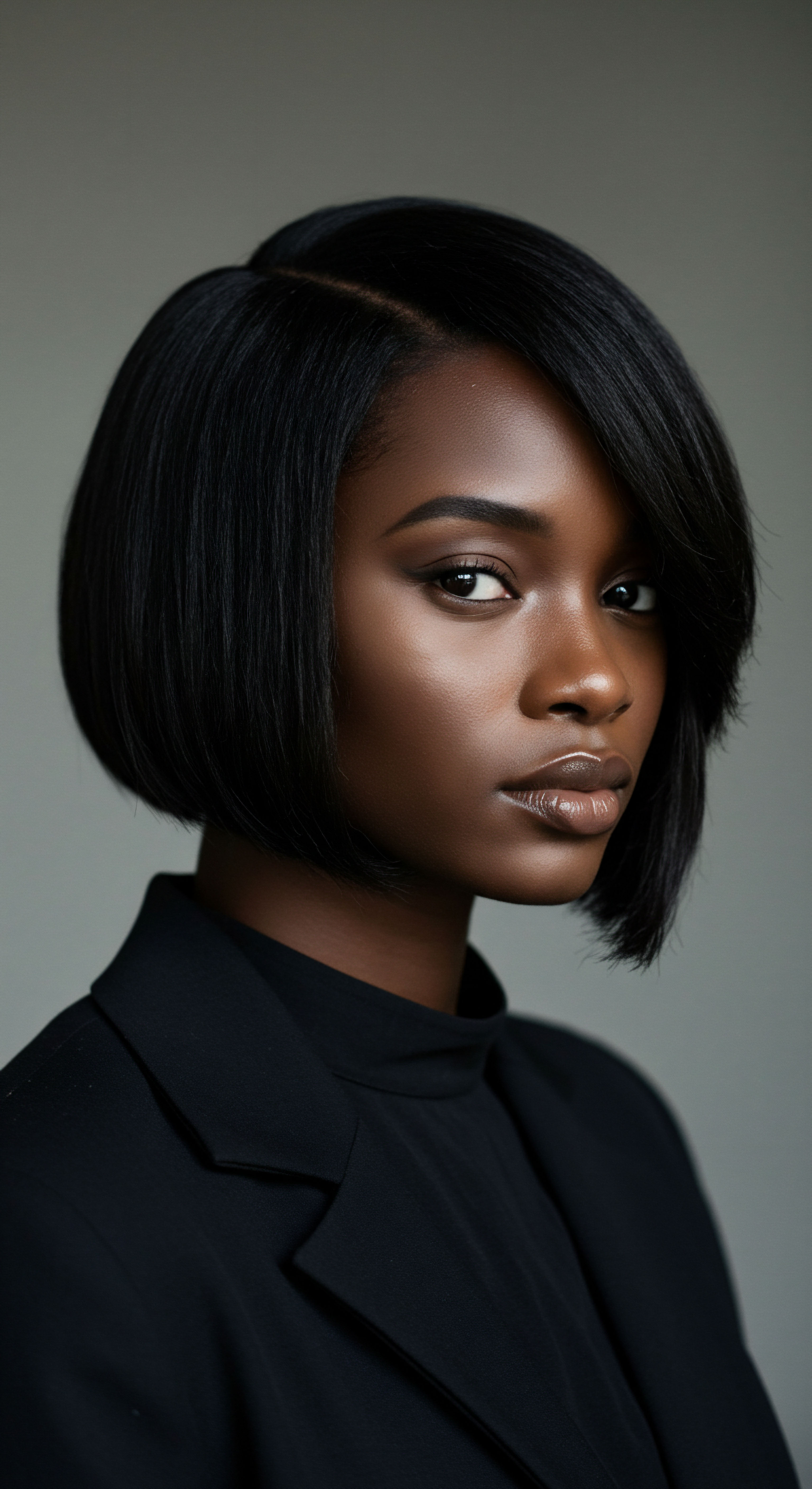
The Scalp’s Unique Environment
The scalp, unlike other skin surfaces, presents a distinctive habitat for microbial communities. It is a place of rich sebaceous glands and a dense population of hair follicles, creating a naturally moist and lipid-laden setting. This particular composition provides an inviting space for certain types of microbes, especially those that thrive on lipids.
The deep, winding structure of hair follicles also creates specialized pockets, some with lower oxygen levels, providing niches for anaerobic bacteria to settle and multiply. This inherent moistness, coupled with the scalp’s natural oils and specific pH, lays the groundwork for the microbial residents that dwell there.

Key Microbial Residents of the Scalp
Within this environment, a few key players consistently appear. The primary bacterial species found on a healthy scalp are Cutibacterium Acnes (formerly Propionibacterium acnes) and Staphylococcus Epidermidis. These are generally considered commensal, meaning they coexist peacefully with their host. Alongside these bacteria, the fungus Malassezia, particularly species like M.
restricta and M. Globosa, is a prominent resident. While these organisms are natural parts of the scalp’s flora, their balance is crucial. An overgrowth of any one species can lead to various scalp conditions.
- Cutibacterium Acnes ❉ Known for metabolizing lipids, these bacteria play a role in the scalp’s oil balance.
- Staphylococcus Epidermidis ❉ These bacteria produce antimicrobial peptides, which help in the skin’s defense and modulate inflammation.
- Malassezia ❉ This genus of fungi thrives on sebum, and while typically harmless, an overabundance can contribute to conditions like dandruff.

The Scalp Barrier and Its Moisture Regulation
A vital aspect of scalp health is the integrity of its natural moisture barrier, often referred to as the stratum corneum. This outermost layer acts as a protective shield, guarding against environmental aggressors and regulating water loss. A healthy scalp barrier prevents excessive moisture from escaping, maintaining the skin’s hydration, and simultaneously acts as a deterrent against harmful bacteria and irritants. When this barrier is compromised, its ability to retain moisture diminishes, potentially leading to dryness or, paradoxically, creating conditions that trap moisture, thereby influencing microbial populations.
The scalp’s intrinsic moist, lipid-rich environment and its diverse microbial community are foundational to understanding how moisture levels influence its delicate balance.

Ritual
As we move from the fundamental understanding of the scalp’s ecosystem, our attention turns to the practical rhythms of daily life and the deliberate choices we make that shape this environment. The practices we adopt, the products we select, and even the atmospheric conditions we navigate, all subtly or overtly impact the moisture levels on our scalp. This, in turn, influences the thriving microscopic world beneath our hair. Considering the textured hair journey, where specific care rituals are often a cornerstone of health and beauty, understanding these interactions becomes a practical wisdom, guiding us toward harmonious scalp wellbeing.
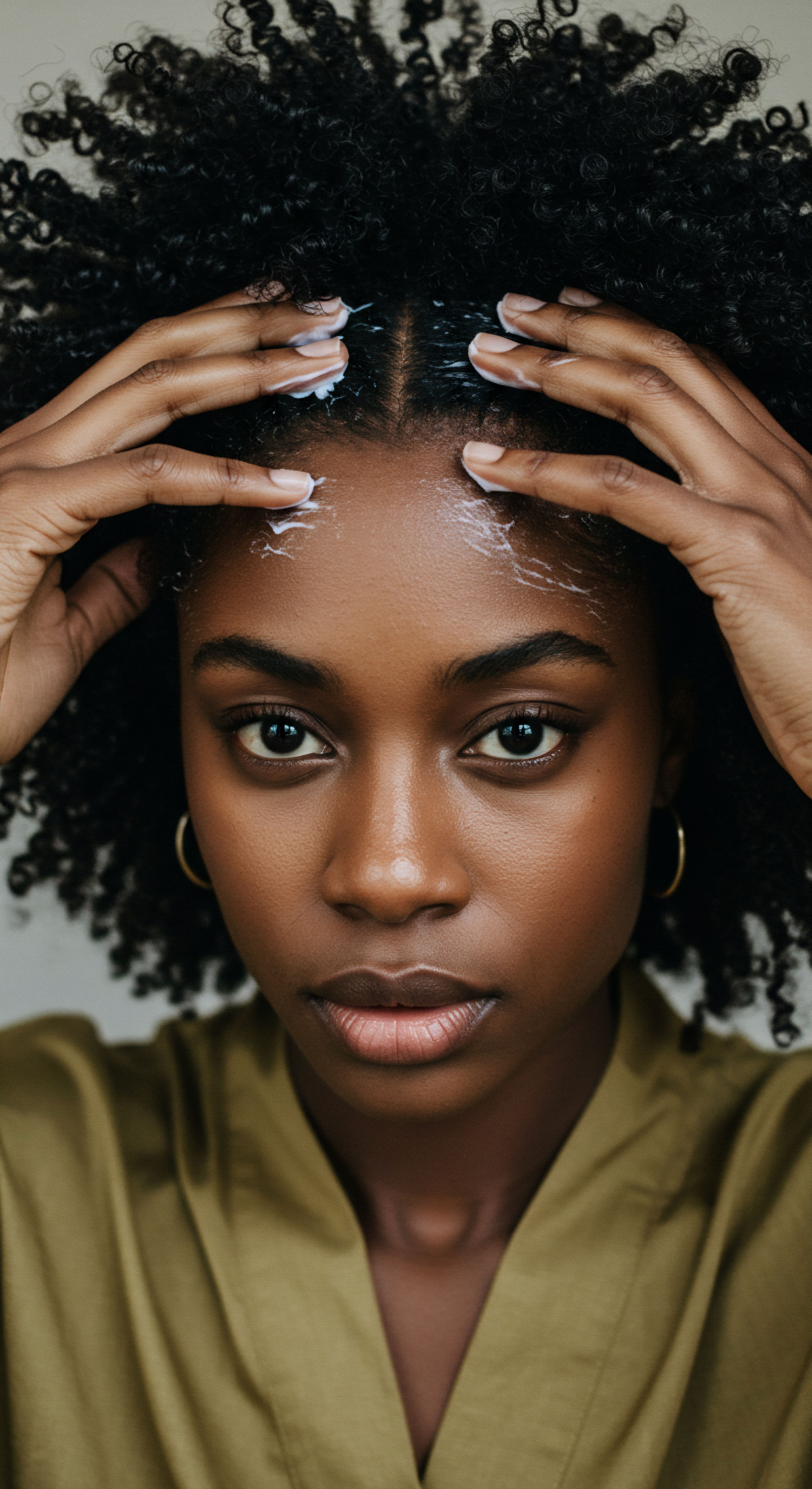
How Does Humidity Affect Scalp Microbes?
The ambient humidity plays a direct and significant role in the moisture content of the scalp. In humid conditions, sweat may not evaporate as readily, leading to its retention on the scalp surface. This trapped moisture, combined with excess oil, dirt, and pollutants, can create a breeding ground for bacteria.
High humidity, particularly when coupled with warmth, can lead to an increase in scalp buildup, often manifesting as greasiness or even folliculitis, a type of scalp acne caused by bacterial invasion of hair follicles. The bacteria, such as Propionibacterium Acnes, feed on the excess sebum and trapped moisture, leading to inflammation.
Furthermore, high humidity supports the overgrowth of certain fungi, notably Malassezia species. These fungi thrive on sebum, and when moisture levels are elevated, their proliferation can accelerate. This often correlates with conditions like dandruff and seborrheic dermatitis, where Malassezia is a key contributor to the irritation and flaking.
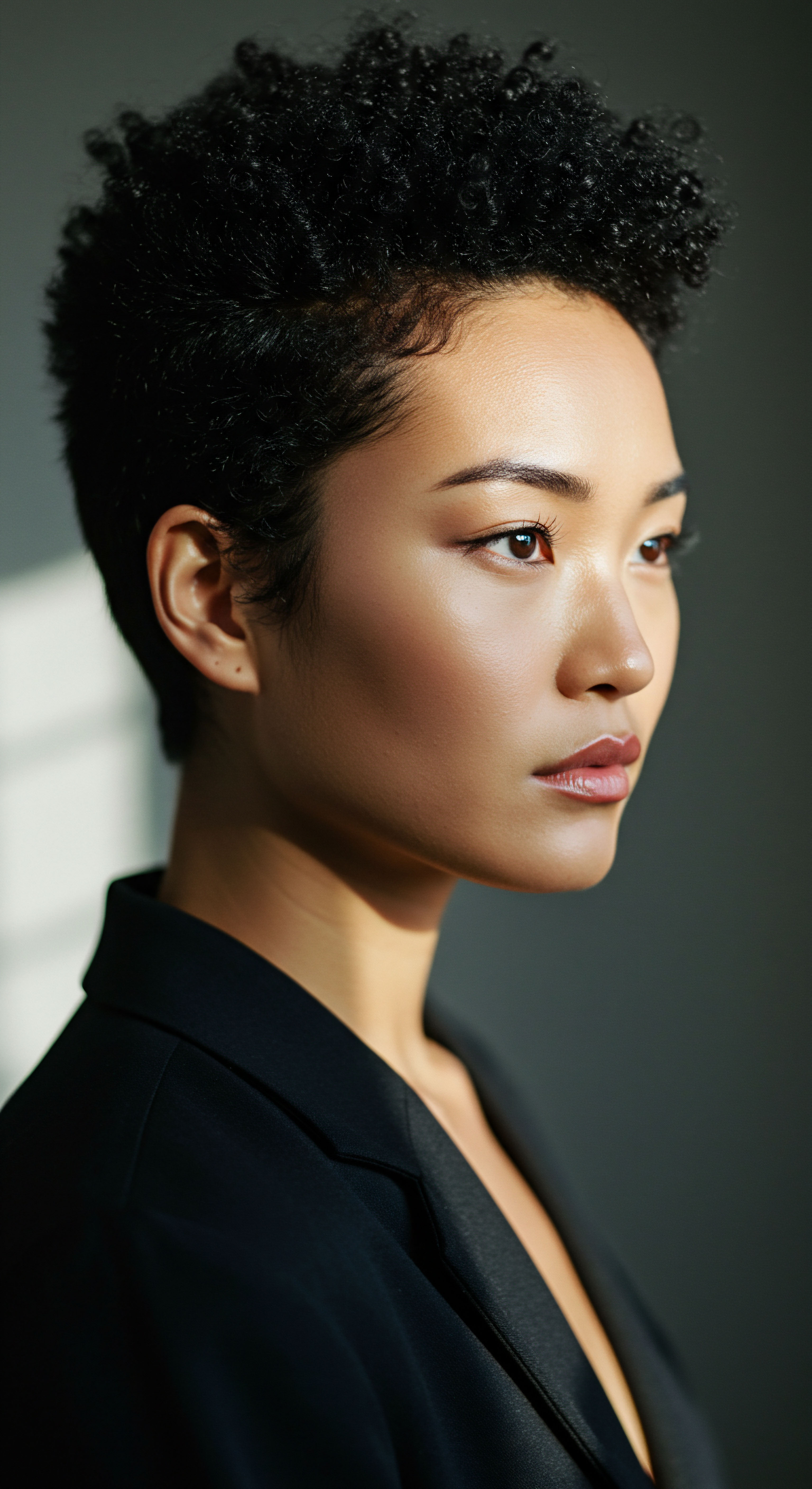
The Role of Sebum and Scalp Hygiene
Sebum, the natural oil produced by sebaceous glands, is a critical component of the scalp environment. While it serves to moisturize the hair and skin, its excessive production or accumulation can disrupt the microbial balance. Humidity can exacerbate this by influencing sebum secretion. When sebum combines with trapped sweat and dead skin cells, it can clog hair follicles, creating an anaerobic environment conducive to bacterial overgrowth.
Regular and appropriate cleansing becomes a ritual of rebalancing, removing buildup and allowing the scalp to breathe. However, the frequency and method of washing must be carefully considered, especially for textured hair, which can be prone to dryness.
| Factor High Humidity |
| Influence on Moisture Increases retained sweat and environmental moisture. |
| Effect on Scalp Bacteria/Fungi Promotes overgrowth of lipophilic microbes like Malassezia and bacteria such as Propionibacterium acnes, leading to dandruff or folliculitis. |
| Factor Excess Sebum |
| Influence on Moisture Creates a lipid-rich, moist environment. |
| Effect on Scalp Bacteria/Fungi Serves as a food source for Malassezia and certain bacteria, contributing to their proliferation and potential dysbiosis. |
| Factor Product Buildup |
| Influence on Moisture Can trap moisture and debris. |
| Effect on Scalp Bacteria/Fungi Creates an environment for bacterial and fungal growth, weakening the scalp barrier. |
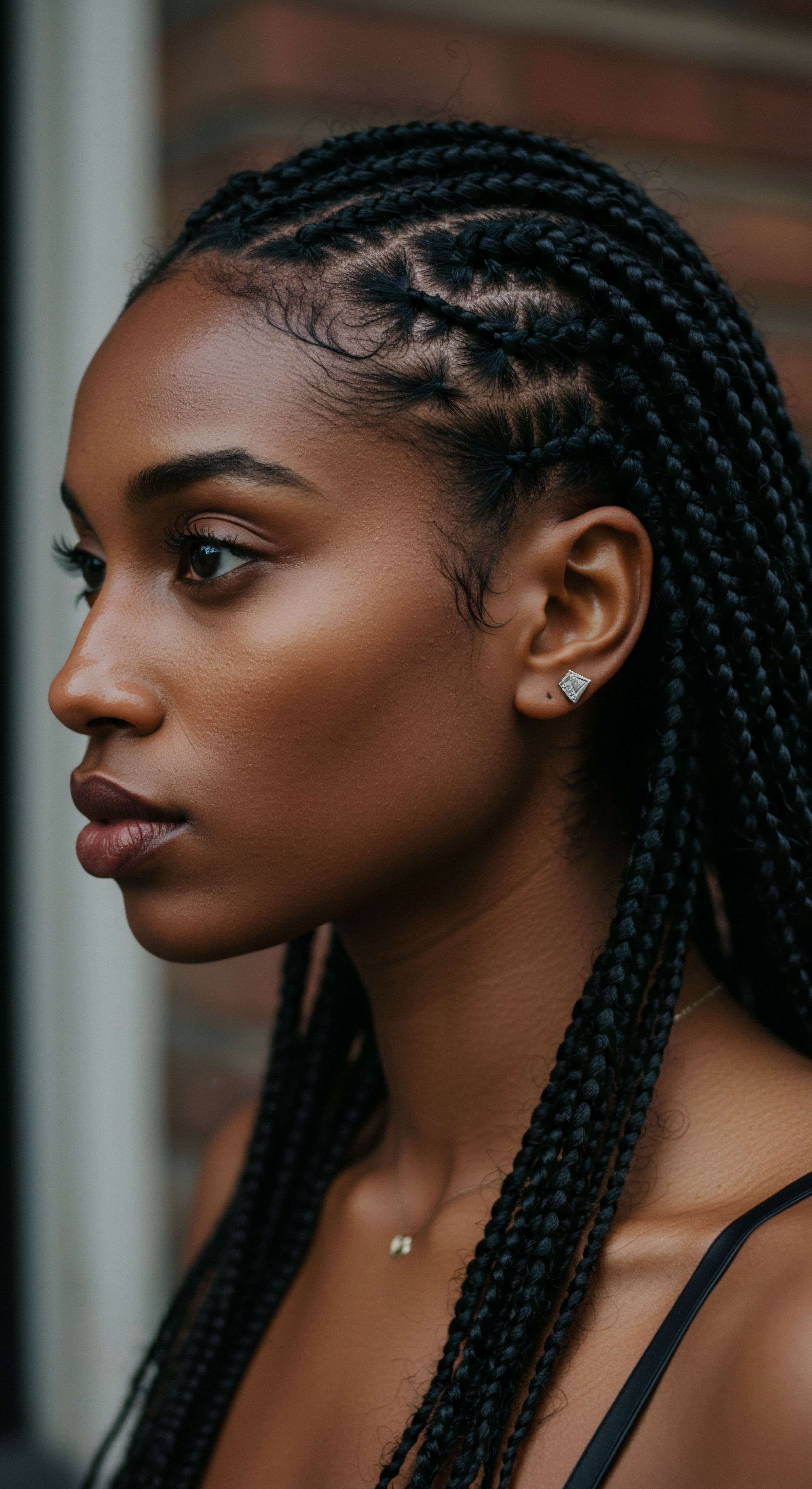
Cleansing Practices and Microbial Balance
The frequency of hair washing directly influences the scalp’s microbial landscape. Studies have shown that less frequent washing can lead to an increase in scalp itch and flakes, often accompanied by a significant rise in Malassezia levels. Conversely, switching to a higher wash frequency can decrease sebum levels, flaking, and oxidized sebaceous lipids.
For textured hair, often characterized by its propensity for dryness due to the difficulty of sebum traveling down the hair shaft, a balanced approach is key. The aim is to cleanse sufficiently to remove buildup without stripping the scalp of its natural moisture.
Our hair care rituals, from cleansing frequency to environmental factors like humidity, profoundly influence the delicate balance of scalp moisture and its resident microbial populations.
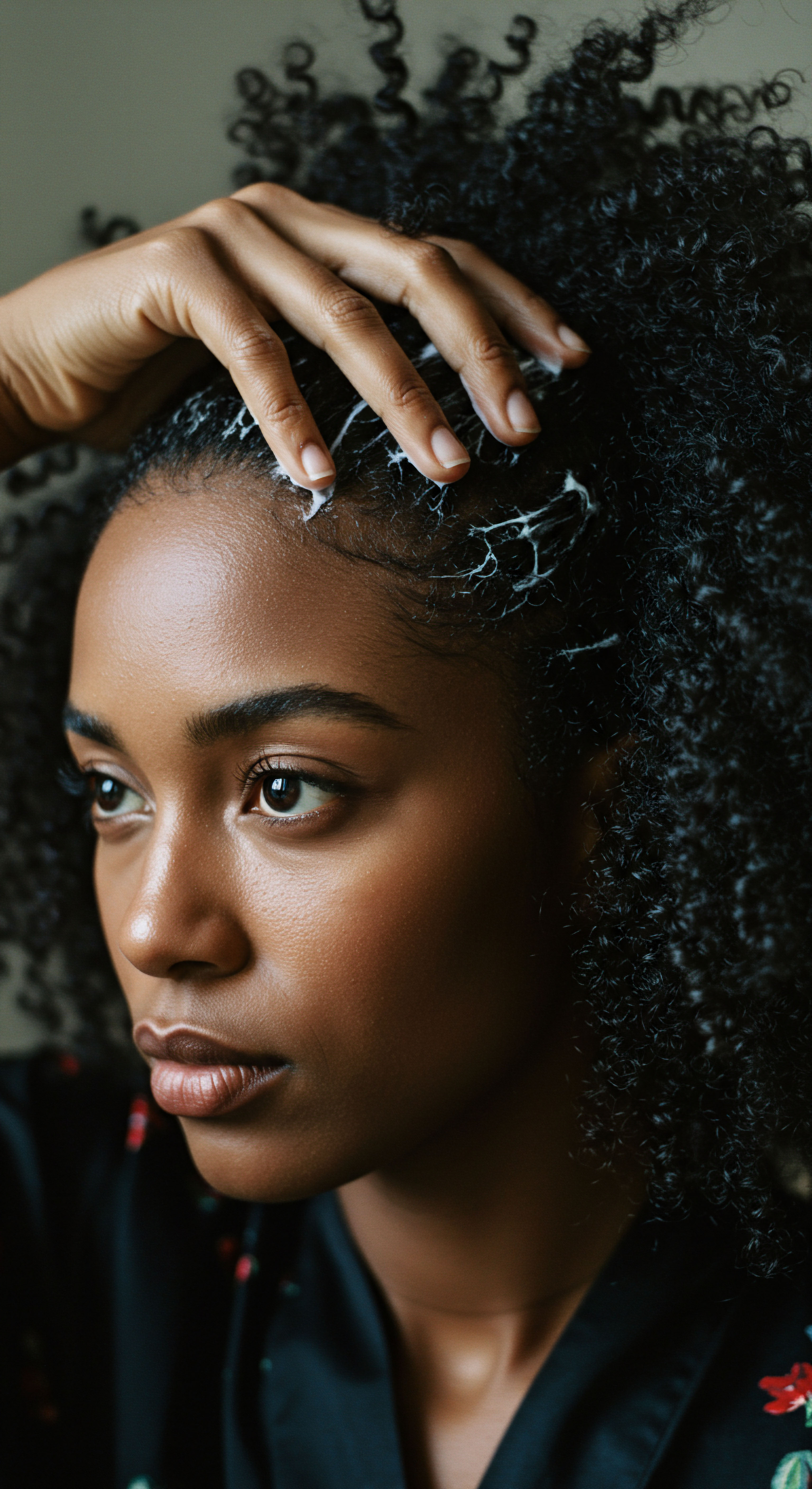
Relay
As we traverse the terrain of scalp health, a more sophisticated lens reveals the intricate interplay between biological predispositions, environmental stressors, and the nuanced responses of the scalp’s microbial community. The simple question of how moisture affects scalp bacteria unfurls into a complex narrative, where the whispers of our ancestors, the specificities of our hair’s curl, and the very air we breathe converge to shape our scalp’s unseen inhabitants. This is where science meets lived experience, offering a deeper understanding that moves beyond surface observations to the underlying mechanisms at play.

Genetic Predisposition and Moisture Regulation
Our genetic makeup holds a subtle influence over the composition of our scalp microbiome, determining characteristics such as sebum production, hair density, and follicle type. Individuals with naturally oily scalps may exhibit higher concentrations of lipophilic microbes like Malassezia, while those with drier skin might host different microbial profiles. Hair density, a characteristic often pronounced in textured hair, also impacts the microenvironmental conditions by influencing moisture retention and microbial diversity. This suggests that the inherent tendencies of our scalp, shaped by our lineage, can dictate how moisture is managed and, consequently, which microbial communities thrive.
A study comparing healthy and dandruff-affected scalps in Indian women found that while Propionibacterium Acnes was associated with healthy scalps, Staphylococcus Epidermidis showed an association with dandruff-prone scalps. This suggests that even within seemingly healthy microbial residents, shifts in their relative proportions can indicate a dysbiosis, where the scalp’s moisture and lipid environment play a significant role in favoring one over the other.

The Scalp Microbiome and Dysbiosis
A healthy scalp microbiome functions as a protective barrier, actively competing with pathogenic microbes and reducing infection risks. Commensal organisms like Staphylococcus Epidermidis and Cutibacterium Acnes produce antimicrobial substances and interact with the host’s immune system to suppress harmful species. They also regulate sebum production and maintain an acidic pH, conditions unfavorable for the proliferation of various pathogens.
However, disruptions to this delicate balance, known as dysbiosis, can lead to various scalp conditions. Moisture, whether in excess or deficit, contributes significantly to this imbalance.
For instance, a study investigating the impact of shampoo wash frequency on scalp conditions found a compelling link between low wash frequency and a dramatic increase in Malassezia levels. In this research, an Antarctic expedition team experienced significant increases in scalp itch and flakes, alongside a 2-3 order of magnitude rise in Malassezia, when wash frequency was low. This highlights how prolonged periods of moisture retention, often associated with infrequent washing or humid conditions, can create an environment where certain microbial populations, like Malassezia, flourish excessively, leading to visible scalp discomfort and flaking.

Moisture and Biofilm Formation on the Scalp
The scalp’s distinct microenvironment, characterized by high moisture and sebum, can promote the formation of microbial biofilms. Biofilms are communities of microorganisms that adhere to surfaces and secrete a protective, sticky substance. These can be detected as slimy layers and are hypothesized to be particularly prevalent on the scalp due to its high moisture content and sebum production, which encourages the growth of Malassezia and Cutibacterium.
Research indicates that sebum production is a dominant factor in controlling biofilm formation on the scalp, given its strong correlation with fungal and bacterial growth. This suggests that moisture, by contributing to the overall environment that encourages sebum and microbial proliferation, indirectly supports biofilm development.
The complex interplay of genetics, environmental humidity, and individual care practices dictates the subtle shifts in scalp moisture, directly influencing the microbial landscape and the potential for dysbiosis.
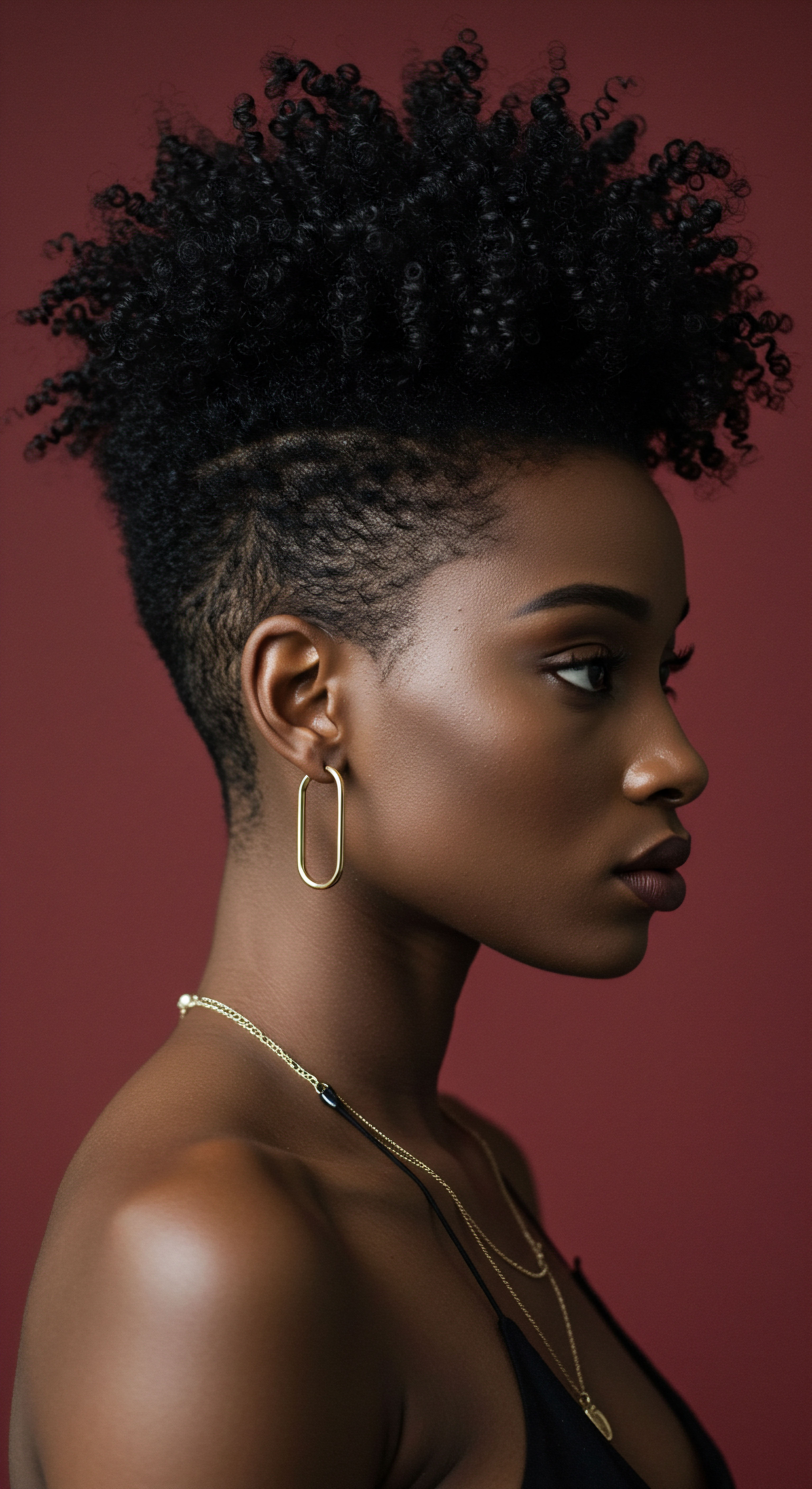
Textured Hair and Its Unique Moisture Dynamics
Textured hair, with its unique curl patterns, often presents distinct moisture dynamics. The tight curl pattern can make it challenging for the scalp’s natural moisturizer, sebum, to travel down the entire length of the hair shaft, making textured hair more prone to dryness. Paradoxically, this dryness can lead individuals to use heavier products that might inadvertently trap moisture at the scalp level, creating a humid microclimate close to the skin.
This can lead to a delicate balance ❉ while the hair shaft may be dry, the scalp itself could be experiencing excessive moisture and buildup, contributing to bacterial and fungal proliferation. Understanding this duality is paramount for developing targeted care strategies for textured hair.
Consider the practice of protective styling, common within textured hair communities. While beneficial for minimizing manipulation and retaining length, these styles can sometimes create an enclosed, warm, and moist environment at the scalp. If not properly ventilated or cleansed, this can become an inviting space for microbial overgrowth. This underscores the need for conscious scalp care within these practices, ensuring that the desire for hair protection does not inadvertently compromise the scalp’s microbial harmony.

The Impact of Scalp PH and Microbial Activity
The pH of the scalp is another critical factor influenced by moisture levels and, in turn, impacts bacterial activity. A healthy scalp typically maintains an acidic pH, which is not conducive to the proliferation of various pathogens. However, disruptions in moisture balance, whether through excessive sweating, infrequent washing, or the use of certain products, can alter the scalp’s pH.
This shift can favor the growth of less beneficial bacteria or fungi, further contributing to dysbiosis. The interplay between moisture, sebum, and pH forms a triumvirate that governs the scalp’s microbial ecosystem.
| Microbe Type Cutibacterium acnes |
| Healthy Scalp Association Core bacterial species, metabolizes lipids. |
| Dysbiosis Association (Impact of Moisture) Can be associated with increased levels in some hair loss conditions like alopecia areata. |
| Microbe Type Staphylococcus epidermidis |
| Healthy Scalp Association Commensal, produces antimicrobial peptides. |
| Dysbiosis Association (Impact of Moisture) Reduced levels linked to alopecia areata; increased levels associated with dandruff in some studies. |
| Microbe Type Malassezia species |
| Healthy Scalp Association Natural resident, thrives on sebum. |
| Dysbiosis Association (Impact of Moisture) Overgrowth due to excess sebum and high humidity linked to dandruff and seborrheic dermatitis. |
| Microbe Type Lawsonella |
| Healthy Scalp Association Present in scalp microbiome. |
| Dysbiosis Association (Impact of Moisture) Negatively correlated with moisture and temperature of the scalp in men with androgenetic alopecia. |
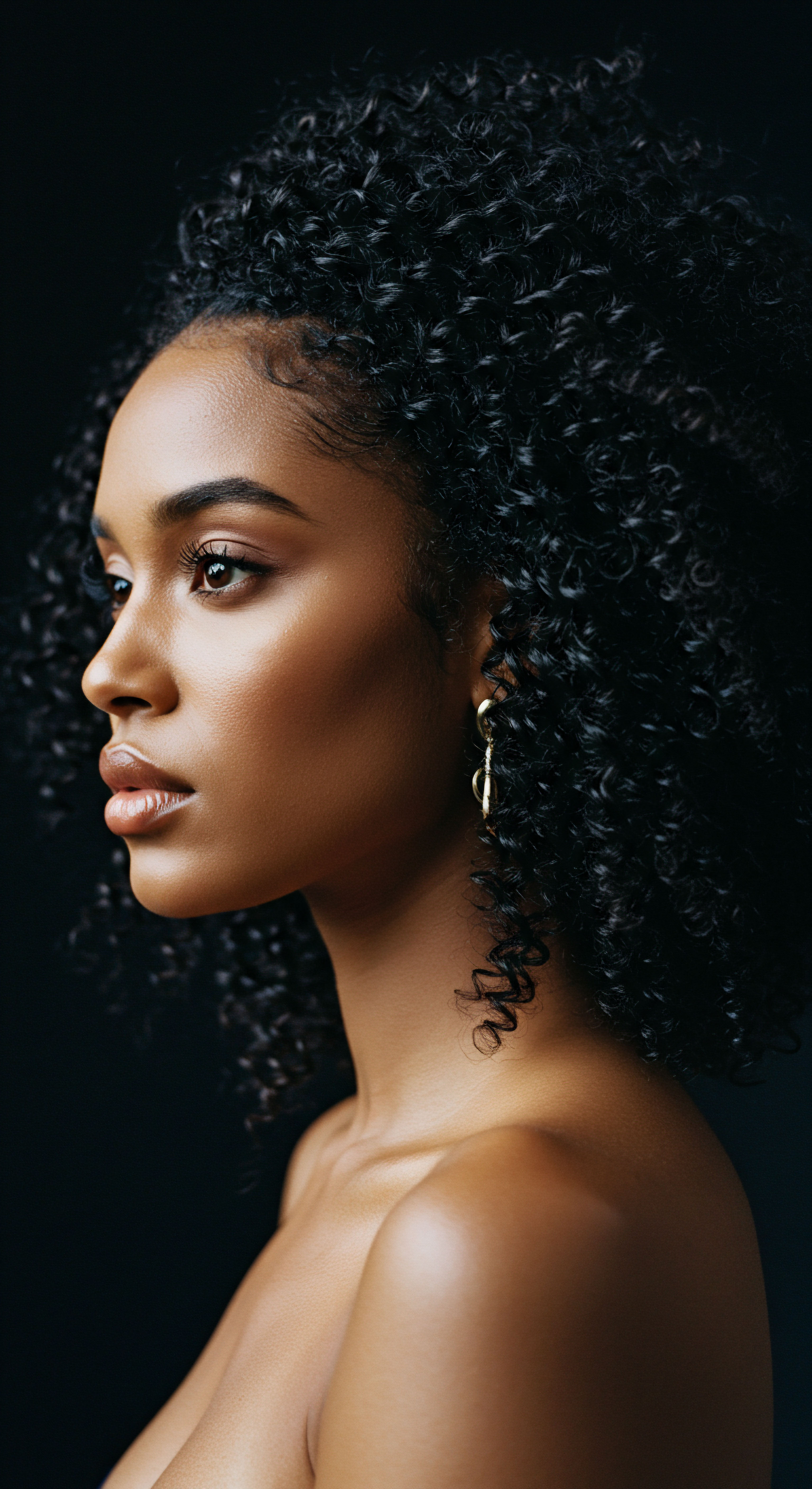
Emerging Research and Future Directions
The scientific community continues to uncover the complex nuances of the scalp microbiome. For instance, recent studies are exploring the potential utility of probiotic and microbiome-modulating therapies to rebalance the scalp ecosystem. This represents a forward-thinking approach, recognizing that instead of simply eradicating unwanted microbes, the goal is to restore a harmonious balance. Understanding how moisture impacts specific bacterial and fungal populations is central to developing such targeted interventions, especially for diverse hair types where moisture dynamics are distinct.
A study comparing scalp and gut microbiomes in androgenetic alopecia (AGA) observed a significant negative correlation between the genus Lawsonella and scalp moisture and temperature in men. This hints at how environmental factors, including moisture, can influence specific bacterial genera, potentially impacting hair health conditions like AGA. While the direct causality is still being explored, it underscores the intricate web of connections within the scalp ecosystem and how moisture is a contributing thread.
Furthermore, research suggests that an increase in bacterial diversity in individuals with AGA, compared to healthy controls, may be due to the appearance of non-inhabitant bacteria. This indicates that dysbiosis might not always be about a reduction in diversity, but sometimes an influx of species that do not typically belong, potentially influenced by altered scalp conditions including moisture levels. The focus shifts to understanding the specific microbial shifts and their functional implications rather than simply overall diversity.
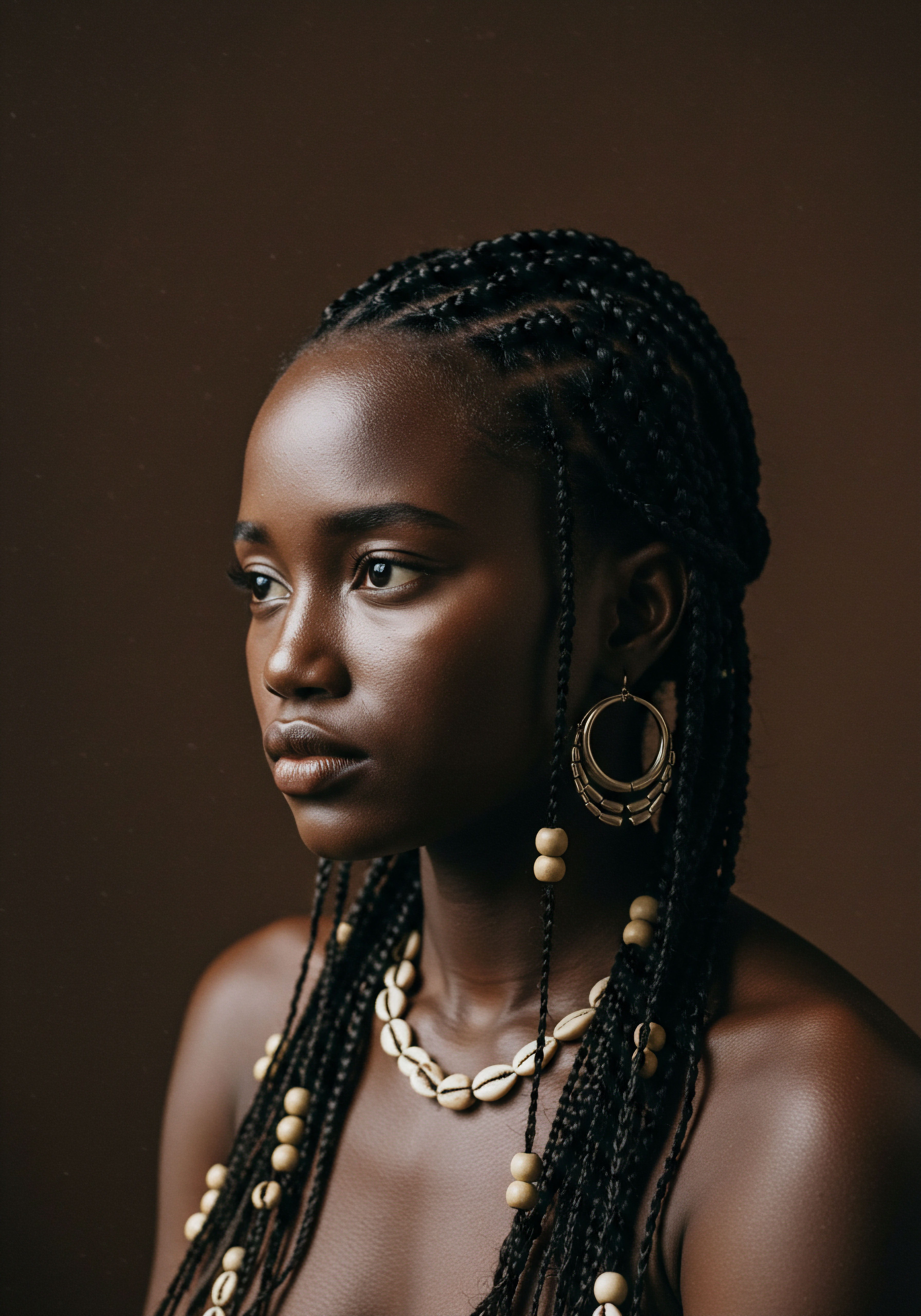
Reflection
The journey through the unseen world of the scalp microbiome, guided by the quiet influence of moisture, reveals a landscape far more intricate than a casual glance might suggest. Our exploration has brought us to a place of deeper appreciation for the delicate equilibrium that governs scalp health, an equilibrium shaped by ancient genetic predispositions, the rhythm of our daily rituals, and the very air that surrounds us. It is a continuous dance, where the presence or absence of moisture can sway the performance of our microbial companions, inviting either serene growth or unsettling discord. For those with textured hair, this understanding is not merely academic; it is a vital lens through which to view and nurture our crowns, acknowledging that true hair wellness begins with a compassionate relationship with the vibrant life at our roots.

References
- 1. Saxena, R. Mittal, P. Clavaud, C. et al. (2018). Comparison of Healthy and Dandruff Scalp Microbiome Reveals the Role of Commensals in Scalp Health. Frontiers in Cellular and Infection Microbiology, 8, 346.
- 2. Kim, J. Kang, Y. Choi, J. et al. (2022). Management of Scalp Biofilm in Local Dermatosis ❉ From In Vivo Visualization to Optimal Treatments. MDPI.
- 3. Townsend, N. Hazan, A. & Dell’Acqua, G. (2023). New Topicals to Support a Healthy Scalp While Preserving the Microbiome ❉ A Report of Clinical and in Vitro Studies. The Journal of Clinical and Aesthetic Dermatology, 16(10 Suppl 1), S4–S11.
- 4. MYLOOK.IE. (2022). Effects of Humidity on Scalp and Hair.
- 5. Sally Beauty. (2023). Textured Hair Health ❉ Scalp Care For Curly Hair.
- 6. MDacne. (2018). What is the best treatment for scalp acne.
- 7. Bhatia, S. (2023). Tired of itchy acne on your scalp? Here’s what can help. Hindustan Times.
- 8. Hairlust. (2023). Pimples on the Scalp? 10 Causes and Natural Treatments of Scalp Acne.
- 9. DermNet. (2023). The Link Between Scalp Barrier Dysfunction and Dandruff and Seborrheic Dermatitis.
- 10. Head & Shoulders. (2020). Does Malassezia cause dandruff? What the science says.
- 11. Syamsuar, M. Nurlitasari, A. Amalia Faaza, T. et al. (2021). Identification of Malassezia sp. as a Cause of Dandruff Among Students at Muhammadiyah Polytechnic Makassar. Journal of Medical Laboratory Science, 5(2), 70-76.
- 12. Traya. (n.d.). Malassezia Scalp ❉ The Root Cause & Relations With Dandruff.
- 13. Saxena, R. et al. (2018). Comparison of Healthy and Dandruff Scalp Microbiome Reveals the Role of Commensals in Scalp Health. Frontiers in Cellular and Infection Microbiology, 8, 346.
- 14. Townsend, N. Hazan, A. & Dell’Acqua, G. (2023). New Topicals to Support a Healthy Scalp While Preserving the Microbiome ❉ A Report of Clinical and in Vitro Studies. The Journal of Clinical and Aesthetic Dermatology, 16(10 Suppl 1), S4–S11.
- 15. Kalichem. (n.d.). Postbiotics for hair and scalp microbiome balance.
- 16. Cureskin. (n.d.). Scalp Acne ❉ How to get rid of it?
- 17. British Association of Dermatologists. (n.d.). Caring for Afro-textured hair.
- 18. Dove. (n.d.). The importance of scalp care for naturally textured hair.
- 19. DermNet. (n.d.). Malassezia infections.
- 20. Park, H. et al. (2022). Comparative analysis of scalp and gut microbiome in androgenetic alopecia ❉ A Korean cross-sectional study. Frontiers in Microbiology, 13, 1079362.
- 21. BASF. (2024). Go Beyond the Basics of Textured Hair Care.
- 22. Adebayo, S. et al. (2023). The Genomic Variation in Textured Hair ❉ Implications in Developing a Holistic Hair Care Routine. Cosmetics, 10(4), 108.
- 23. The Secret Life Of Skin. (2022). What is the scalp microbiome and why is it important for our health?
- 24. Courage + Khazaka. (n.d.). Measurements on Hair and Scalp.
- 25. Moreno-Arrones, O. M. et al. (2020). Alopecia and the Microbiome ❉ A Future Therapeutic Target? Actas Dermo-Sifiliográficas, 111(1), 1-8.
- 26. BaseClear B.V. (n.d.). New Insights into Malassezia’s Role in Dandruff.
- 27. Byrd, A. L. et al. (2022). Staphylococcus epidermidis and its dual lifestyle in skin health and infection. Nature Reviews Microbiology, 20(9), 509-522.
- 28. Dawson, T. L. et al. (2021). The Impact of Shampoo Wash Frequency on Scalp and Hair Conditions. Journal of Investigative Dermatology Symposium Proceedings, 21(1), 16-20.
- 29. Abena, A. et al. (2018). Weekly hair washing ❉ The recommended solution for women with afro-textured hair to alleviate dandruff and scalp discomfort. International Journal of Cosmetic Science, 40(6), 613-620.
- 30. Park, H. et al. (2022). Comparative analysis of scalp and gut microbiome in androgenetic alopecia ❉ A Korean cross-sectional study. Frontiers in Microbiology, 13, 1079362.
- 31. MyMicrobiome Certification. (n.d.). Standard 19.20 scalp microbiome.